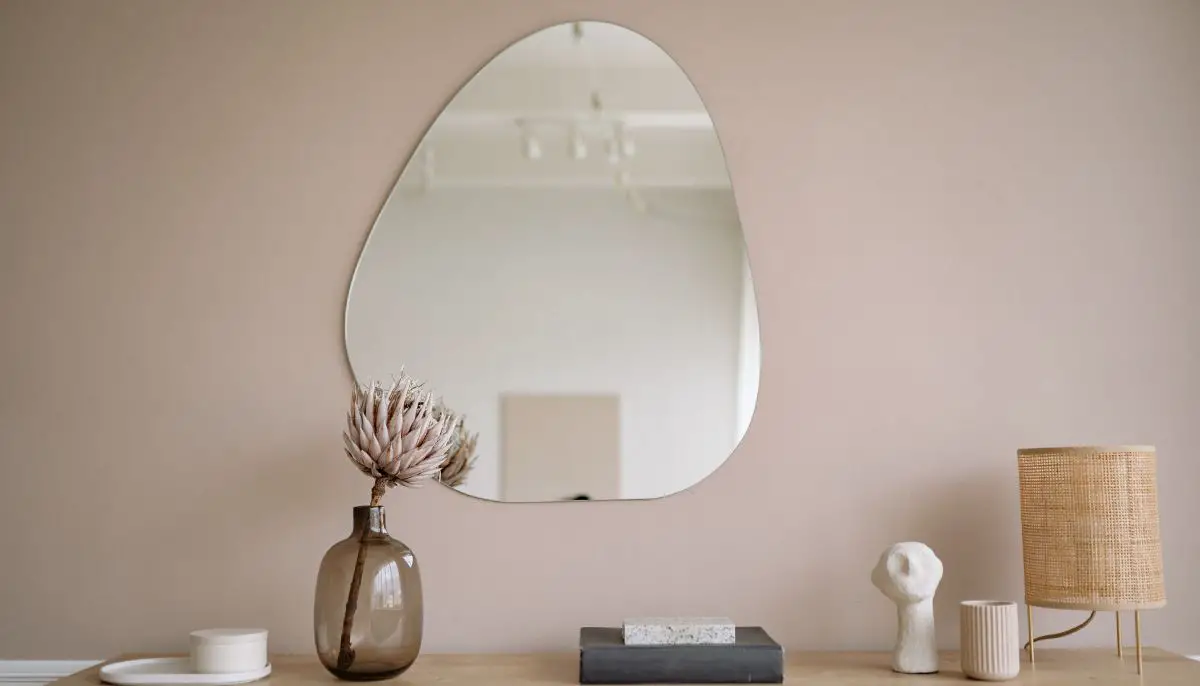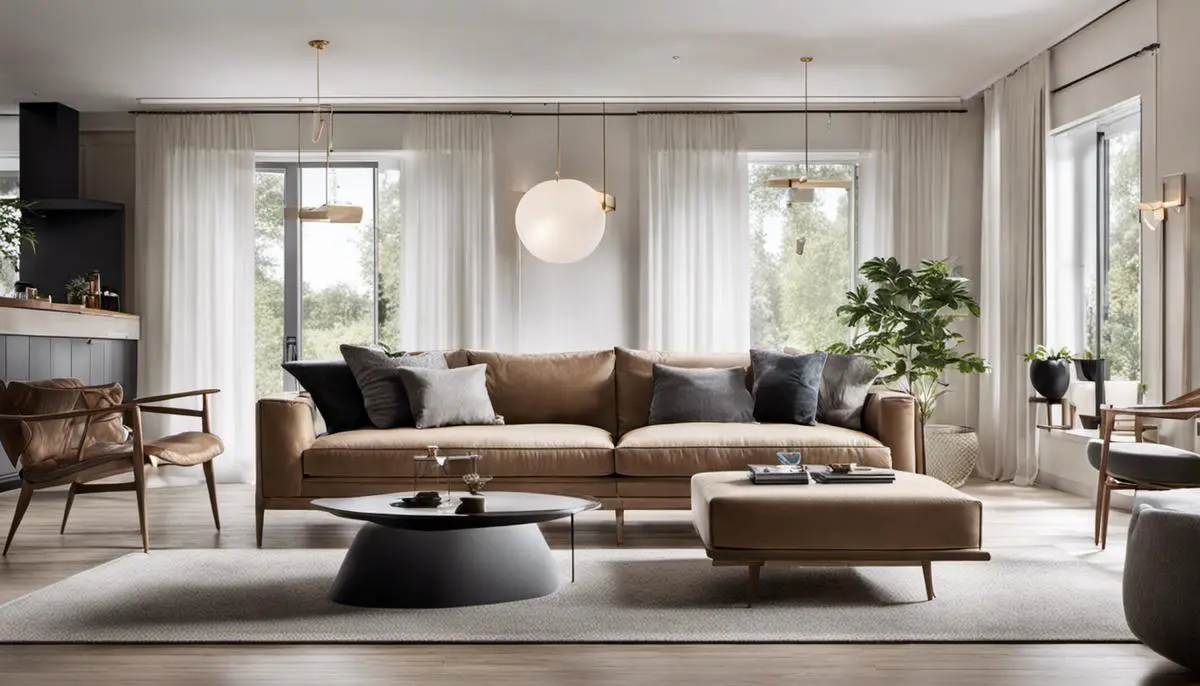Are you looking to elevate the style and ambiance of your space with a simple yet transformative addition? Mirrors are not just reflective surfaces; they are style statements that can dramatically alter the look and feel of any room. In the realm of interior design, the choice between a polished edge mirror vs beveled edge mirrors is more than just a detail—it’s a decision that impacts the overall aesthetic and atmosphere of your space.

Whether you’re aiming for a sleek, modern look or a sophisticated, elegant vibe, understanding the nuances between these two types of mirrors is crucial. Imagine your space not just enhanced, but transformed with the right mirror. A polished edge mirror offers a minimalist and seamless appeal, perfect for contemporary designs. On the other hand, a beveled mirror adds a layer of depth and sophistication, catching light in a way that breathes life into any room.
Continue reading to delve deeper into the characteristics, applications, and decor-enhancing capabilities of polished edge and beveled mirrors. Make an informed decision for your next home decor project and discover which mirror will truly enhance your space.
The Charm of Flat Mirrors and Flat Edge Designs
Flat mirrors and those with a flat edge are celebrated for their simplicity and versatility. The edges of the mirror in such designs are typically straight edge, embodying a clean cut that blends seamlessly into contemporary and minimalist interiors.

Unlike frameless mirrors which might feature slight curves or pencil-ground edges, flat-edged mirrors offer a clear glass view without distraction, making them ideal for bathroom mirrors and living room settings where a clean cut and clear glass are preferred for a contemporary look.

The Sophistication of Beveled Edge Mirrors
Moving on to beveled edge mirrors, these pieces are known for their decorative angled edge, which adds interesting visual effects and a touch of timeless elegance to any space. The width of the beveled edge creates a focal point in rooms, especially in living rooms or as beveled vanity mirrors in bathrooms.

Beveled glass, with its slightly rounded edge, refracts light in different ways, creating special effects that enhance the room’s visual appeal. Frameless beveled mirrors are a popular design option among interior designers, as they add depth and character without the need for a traditional frame.
The Practicality and Aesthetics of Edge Types
The type of edge on a mirror affects not only its look but also its functionality. Seamed edge mirrors, treated with a sanding belt for a smooth chamfer top, prevent sharp edges, making them safer options for households with children.

Meanwhile, polished edge mirrors and flat polished edge designs are favored for their smooth edges and glossy finish, ideal for medicine cabinets and gym mirrors where a straight-line bevel or single bevel might not be necessary.
Application Across Different Spaces
Specific applications dictate the choice between polished edge and beveled edge mirrors. In kitchen & bathroom areas, flat mirrors with a polished edge or flat edge offer a contemporary look that complements modern appliances and fixtures.

For living rooms, dining rooms, and spaces designated as a great room or breakfast nook, beveled wall mirrors serve as decorative items. Their decorative angled edge creates a sophisticated ambiance. Beveled glass mirrors are also suited for kitchen dining room pantry areas, adding a layer of decorative flair.
In the video below, Gerry Whelan Director of Archer Glass discusses applications of both of these types of glass
Enhancing Home Decor with Specific Mirror Edges
The edges of the glass in a mirror are not merely functional but are also integral to the mirror’s overall design. Pencil edge mirrors, with their slight curve, offer a middle ground between the stark flat edge and the pronounced decorative angled edge of beveled mirrors.

This type of edge is versatile, fitting well within various decor styles from traditional to contemporary. If you are seeking interesting visual effects without the extra cost associated with beveled edges, pencil polish and flat ground edge options are worth considering.
Conclusion: The Right Mirror for Your Home
Choosing between a polished edge mirror and a beveled edge mirror ultimately comes down to personal preference, specific needs, and the overall design theme of your home. Whether you’re looking for a mirror to serve as a focal point in your living room, enhance the functionality of your bathroom, or add a touch of elegance to your kitchen & bathroom, considering the type of polish, edge type, and special effects desired will guide you to the perfect choice.

With the right mirror, you can create interesting visual effects, add a contemporary or sophisticated touch to any room, and enjoy the blend of style and practicality it brings to your daily life. If you are drawn to Scandinavian minimalism and functionality, polished edge mirrors may align perfectly with your design philosophy. However, if you’re looking to infuse your space with a touch of elegance and sophistication, beveled mirrors are a splendid choice.
You can explore more about incorporating mirrors into your decor with this article on Stylish Circle Mirror Wall Decor Ideas.
| Design Theme | Edge Type | Special Effects | Ideal Application |
|---|---|---|---|
| Focal Point in Living Room | Decorative Edge | Light Reflection | Beveled edge mirrors to catch light and create an attractive focal point. |
| Functionality in Bathroom | Smooth Edge | Clarity and Simplicity | Flat or polished edge mirrors for a clean, straightforward look. |
| Elegance in Kitchen & Bathroom | Slightly Rounded | Depth and Sophistication | Beveled or pencil polished mirrors to add a layer of sophistication and visual depth. |
| Simplicity in Bedroom | Straight/Flat Edge | Minimalist Design | Polished or flat edge mirrors that blend seamlessly with bedroom decor. |
| Expansion in Hallway | Wide Beveled Edge | Spatial Illusion | Large beveled mirrors to create the illusion of space in narrow hallways. |
| Dressing Area in Bedroom | Straight Edge | Functional Clarity | Full-length polished edge mirrors for clear, undistorted reflections in dressing areas. |
| Accent Pieces in Dining Room | Decorative Edge | Visual Interest | Beveled or pencil edge mirrors as decorative pieces to enhance dining room elegance. |
| Artistic Flair in Common Areas | Unique Shapes | Creative Reflections | Uniquely shaped beveled mirrors that serve as art pieces, adding character to common areas. |
FAQ on Mirror Edge Types and Design Applications
Q1: What does ‘Edge Type’ mean in the context of mirrors?
A1: ‘Edge Type’ refers to the way the perimeter of a mirror is finished. This can range from smooth and flat polished edges to decorative beveled edges. The edge type affects both the mirror’s aesthetic appeal and its functional aspects, such as safety and light reflection.
Q2: How does a beveled edge differ from a flat edge in mirrors?
A2: A beveled edge is cut at an angle to create a sloped edge, which catches light and creates depth, adding a decorative touch. A flat edge, however, is cut straight and then polished, offering a sleek and minimalist look. The choice between them often depends on the desired aesthetic and the room’s design theme.
Q3: Can the edge type of a mirror impact the perception of space in a room?
A3: Yes, mirrors with beveled edges can create an illusion of depth, making a room appear larger and more open. Flat edge mirrors, with their straightforward and clean lines, can enhance the modern or minimalist decor without affecting the sense of space.
Q4: Are there safety considerations to keep in mind when choosing a mirror’s edge type?
A4: Absolutely. Mirrors with rounded or smoothed edges, such as those with a pencil polish, are generally safer, reducing the risk of cuts from sharp edges. This is particularly important in households with children or high-traffic areas.
Q5: How do I choose the right edge type for my living room focal point?
A5: For a living room focal point, consider a beveled edge mirror. Its decorative edge and the way it reflects light can create a striking visual centerpiece that draws attention.
Q6: What edge type is recommended for bathroom mirrors for functionality?
A6: For bathrooms, smooth or flat edge mirrors are recommended for their clean look and ease of maintenance. These mirrors provide clarity and simplicity, fitting well with the functional and often moisture-prone environment of a bathroom.
Q7: Can the edge type of a mirror contribute to its elegance in a kitchen or bathroom?
A7: Yes, slightly rounded edges, like those found on beveled or pencil polished mirrors, can add an element of sophistication and elegance, making them perfect for kitchens and bathrooms looking to combine functionality with decorative appeal.
Q8: What considerations should be made for mirror placement in dressing areas and hallways?
A8: In dressing areas, full-length mirrors with straight edges offer clear, undistorted reflections, making them ideal for functionality. In hallways, large mirrors with wide beveled edges can create an illusion of space and serve as a decorative element.
Q9: Are there unique edge types suitable for adding artistic flair to common areas?
A9: Mirrors with unique shapes and decorative edges, such as unconventional beveled designs, can add an artistic flair to common areas, serving as both functional mirrors and pieces of art.








Leave a Reply